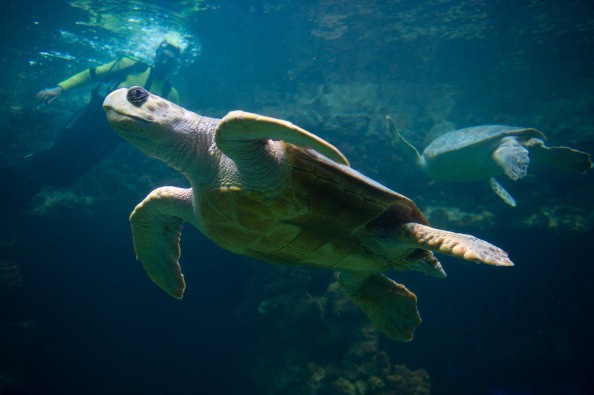Artificial intelligence can better detect illegal tortoise shell, opening up a new battleground in the fight against illegal wildlife trafficking.

Tortoise shell has been used to produce everything from jewelry to combs to dishware for generations because of its resilience and a gorgeous swirl of translucent amber and brown layers.
Brad Nahill, co-founder and president of turtle conservation organization SEE Turtles and a National Geographic Explorer, says, "It was plastic before plastic was developed because it's so pliable."
Tortoises do not produce tortoise shell. The hawksbill turtle, which is severely endangered, is virtually entirely responsible for it. According to records, at least nine million hawksbills were killed and sold for their shells between 1884 and 1992. Less than 25,000 breeding females are left today, prohibiting international commercial trading.
Attempt to Combat Criminal Trafficking
Nahill's organization is leading an attempt to tackle the criminal trafficking of this ancient substance using contemporary technologies. It's tough to tell the difference between natural and imitation tortoiseshell because it's frequently and precisely duplicated using resin. SEE Turtles collaborated with the Smithsonian OCIO Data Science Lab to create an app to assist.
SEE Shell
The SEE Shell program utilizes machine learning to determine if a snapshot of something with a tortoiseshell pattern is real or fake with 94 percent accuracy. According to Alexander Robillard, a predoctoral researcher at the Smithsonian's Data Science Lab who designed the computer model that runs it, it's the first smartphone app to employ computer vision to combat the illicit wildlife trade, and it'll help educate conservation-minded buyers and law enforcement. (The software is available on both the Apple App Store and Google Play.)
Tortoiseshell is still sold on the black market in at least 40 countries, according to Nahill, with the majority of sales taking place in Central America and Southeast Asia. The vast majority of the illegal transactions are made by tourists purchasing tortoiseshell items from gift stores and souvenir stands while on vacation.
The app is also helpful because of the volume of data it can supply. SEE Turtles can discover hot places for unlawful sales by uploading all photographs to a confidential, centralized database with GPS coordinates for each.
"It's a terrific thing even if we get a few hundred tourists actively utilizing it, gathering data, and avoiding purchasing real stuff," Nahill adds. SEE Turtles intends to promote the free app via social media campaigns and collaborations with other conservation groups.
Data Collection

Although many different groups around the world are collecting data on the hawksbill trade, marine ecologist Emily Miller, who was not involved in the app's development but authored a 2019 paper on the global scale of the hawksbill trade, says that "one of the major barriers to answering research questions is consolidating, formatting, and organizing all of the data," having a larger, centralized database "will be incredibly helpful to understanding trade patterns globally."
Robillard gathered 4,000 photographs of authentic and fake tortoiseshell goods with the help of Nahill's crew. Robillard submitted the pictures into his computer model, which studied the pixels in each to discover the form and coloring variations between natural and imitation tortoiseshell.
According to Nahill, one significant distinction is that the patterning on actual tortoiseshell is random. Splotches with consistent edges or the same pattern across many goods marketed simultaneously are common in faux products. In addition, the orange tint in fake tortoiseshell has a constant translucency throughout.
Differentiating
Nahill and Robillard are adept at telling the real from the phony, but a non-expert would need years of effort to master that talent without the software. "I tell folks that it puts Brad [Nahill] in their pocket!" "The app," Robillard says. "Any visual activity that a person can perform, but more quickly and fast," he says of machine learning and computer vision. (I put SEE Shell to the test on two sets of tortoiseshell-patterned spectacles, and it immediately recognized them as phony.)
For the most recent updates from the animal kingdom, don't forget to follow Nature World News!
© 2025 NatureWorldNews.com All rights reserved. Do not reproduce without permission.





